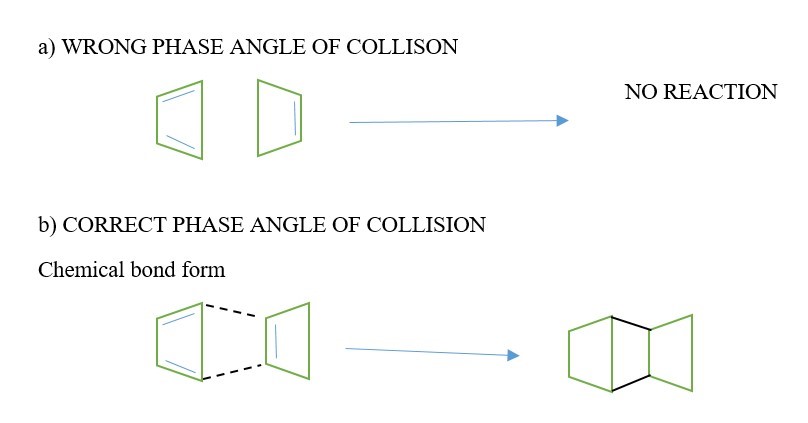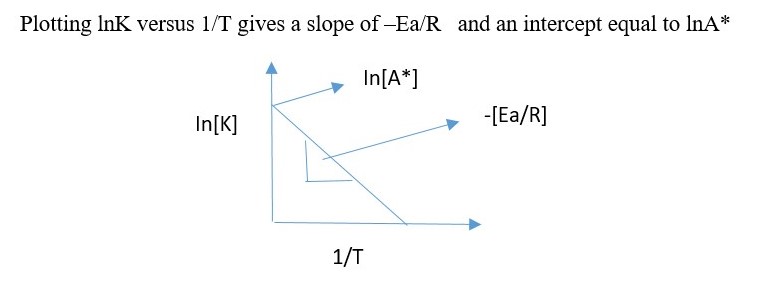GASES AND COLLISION THEORY
GASES
Every material expands when heated. Why?
Heat energy added is absorbed by the particles of materials [solid, liquid or gas].
This absorbed heat energy goes to increase the vibrations particles of matter.
Increased vibrations of the particles of a substance = increase temperature of the substance
Increase in vibrations of the particles = surrounding particles pushed farther away so particles for more space to vibrate = increased amount of space (volume) occupied by each particle of the substance = EXPANSION of materials.
Gas and liquids take the shape of the container they fill.
Total collision between gas particles and the walls of their container = total pressure of gas in the container.
Amount of Gas in a specific volume of space can be measured by the pressure they exert on the walls of their container.
Pressure= force/area
Force = Newtons (N)=kgm/s2
Pressure SI units = Pascal (Pa) = N/m2
Standard atmospheric pressure = 1 atm= 760mmHg = 760 torr
1atm= 101325 Pa = 1.01325 kPa
GAS LAWS
LUSSAC’s LAW
More heat = higher temperature = more vibrations of gas particles = higher gas pressure
This shows temperature (T) of a gas is directly proportional to the gas pressure (P).
T α P
or
P = KT , where K is a constant.
P/T = K constant
P1/T1= P2/T2
CHARLES Law
More heat = higher temperature = more vibrations of gas particles = larger volume of space occupied by gas particles
T α V or
V = K T,
V/T = constant K
where K is a proportionality constant.
V1/T1=V2/T2
Boyle’s Law
Squeezing OR reducing the volume of container = increased vibrations between particles and container walls = increased pressure of gas particles.
Pressure of gas is inversely proportional to the volume of gas.
P α 1/V
or
P = K (1/V) , where K is a constant
V = K x 1/P
PV = constant K
P1V1=P2V2
AVOGADRO LAW
Volume and moles ; 1 mole of gas = 22.41L at STP
IDEAL GAS
-
Behave as particle spheres. Gas particles are particles like tennis balls.
-
No attraction or repulsion between particles
-
Particles bounce of walls of container without losing energy.
-
No chemical reaction occurs between particles or wall of container.
-
gas volume is negligible compared to container.
V = K T
P = K T
Therefore, PV = K T,
PV/T = K = constant , P1V1 /T1 = P2V2/T2
K is Boltzmann’s constant
For 1 mole of a gas K=R/N ,
N = Avogadro’s number = 6.23 x 10 -23 particles.
where R = UNIVERSAL gas constant 8.314 J mol-1 K-1
K= n R , where n = number of moles of a gas
PV/T = n R or PV = n RT …..ideal gas equation.
P1V1 /T1 = P2V2/T2
QUESTIONS
R = 0.082057Latm/Kmol at STP=1atm and 273.15K
-
Calculate the pressure of 5 moles of gas in a volume of 5.43L at 69.5o
Suggestion: Use ideal gas equation, PV=nRT
-
Calculate volume(L) of 1000g of CO2 gas at STP.
Suggestion: Use Avogadro’s Law OR Ideal gas equation
-
An unknown gas at 9L, 0.5atm and 89oC changes to a final volume of 5L at a temperature of 50o What is final Volume of the gas.
Suggestion: Use Boyle’s Law and Charles Law combination.
HENRY’S LAW:
Solubility of a gas, or the concentration of solution from dissolved gas particles in solvent is proportional to the gas pressure at the surface of the solution at any specific temperature.
M=kP, where M is the concentration of solution from dissolved gas particles.
P=gas pressure at surface of solution.
k is a temperature dependent constant.
PARTIAL PRESSURES OF MIXTURES
Mixtures = Different things added together.
Mole of each item in mixture/Total moles = Mole Fraction
For mixture of items , A ,B ,C and D.
Na = moles of A
Xa = Mole fraction of A = Na /[Na + Nb + Nc + Nd]
Partial pressure is the pressure exerted by an individual gas in the presence of other gases.
Depends on its mole fraction.
If Air is a mixtures of gases A, B, C and D,
Pa = Pressure exerted by A = partial pressure of A
Pa = XaPao , where Pao is pressure of gas A in pure form when no other gas is present.
Total pressure of air = P = Pa + Pb + Pc + Pd
VOLATILE SOLUTES + VOLATILE SOLVENT
TOTAL PRESSURE = sum of partial pressures of all solutes and solvent particles in vapor phase above the solution.
A solution of made up of substance 1, 2 and 3 volatile substances.
Pt = P1 + P2 + P3 ……..etc.
Pt = total pressure
P1, P2, and P3 are partial pressures of 1, 2 and 3 above the solution.
For a two-component system; a volatile liquid solute A [e.g. acetone] and a volatile liquid solvent B
[e.g. benzene].
Pt = Psolute + Psolv
= PB + PA = XBPBo + XAPAo
where XB and XA , where are mole fractions of A and B in solution
PB and PA are partial pressures of gaseous A and B above the solution at that temperature.
PBo and PAo are vapor pressure of pure A and B at that temperature.
XA = nA /(nA+nB) = 1 – XB
Pt = Psolute + Psolv
= PB + PA
= XBPBo + (1-XB)PAo
= XBPBo + PAo – XB PAo
= PAo + XBPBo – XB PAo
Pt – PAo = XBPBo – XB PAo
= XB ( PBo – PAo )





